Volleyball exercises for u7
- Ladder exercise
- Slalom
- Sideways movement back and forth between 2 cones (low pass stance)
- Bench: rv up - lv up - rv down - lv down (can be stepping or jumping)
- Throw ball against wall (lying on stomach) with elbows off the mat
- Jumping back and forth over the rope (2 feet together) -> small jumps -> fast
- Hurdles: lowest position and jump over them with 2 feet
- Bench: lie on your belly and pull yourself forward with your arms
- Jumping rope
- Stomach exercises: with stretched legs and feet over a big pawn each time
- Swinging jump over a bench
- Ladder exercise
- Pass the ball through the basket
- In each hand a tennis ball - arms sideways (90 degrees with body) and then squeeze the tennis ball
- Planks
- 4 cones in the corners, 1 central base to which the player always returns.
- The player moves to one of the cones and plays the ball back OH, the intention is to recover the ball well.
- Short and quick ball changes.
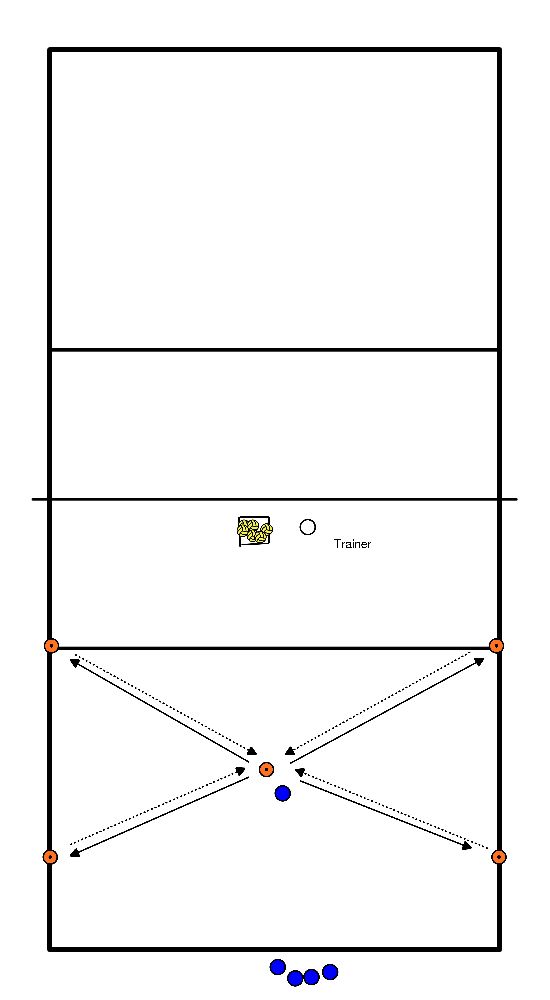
start with tennis balls
- mark 2 zones on the field in the backfield
- take steps from the 3 meter line and throw the tennis ball with attack technique.
- exercise can be made more difficult with volleyball
- try to own throw + stroke
- pass + stroke
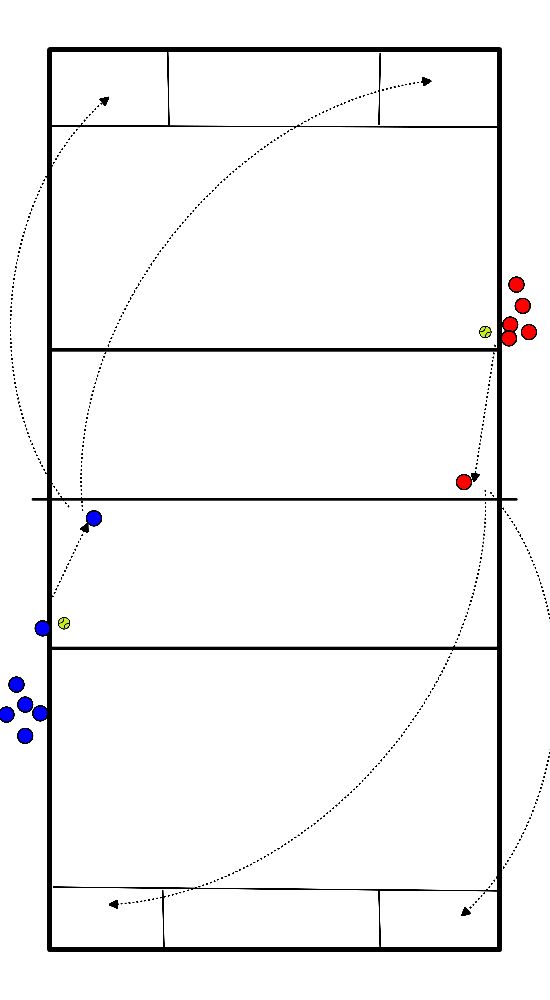
Part 1:
- At the position where the attacker would normally pass the ball over, a basket is placed.
- by means of a high key the ball is played into the basket
- make it more difficult by adding an extra pass BH or OH
Part 2:
- instead of the basket the attacker makes the move but does not hit!
- catching the ball overhead with the striking hand behind the ball
Part 3:
- pass and strike
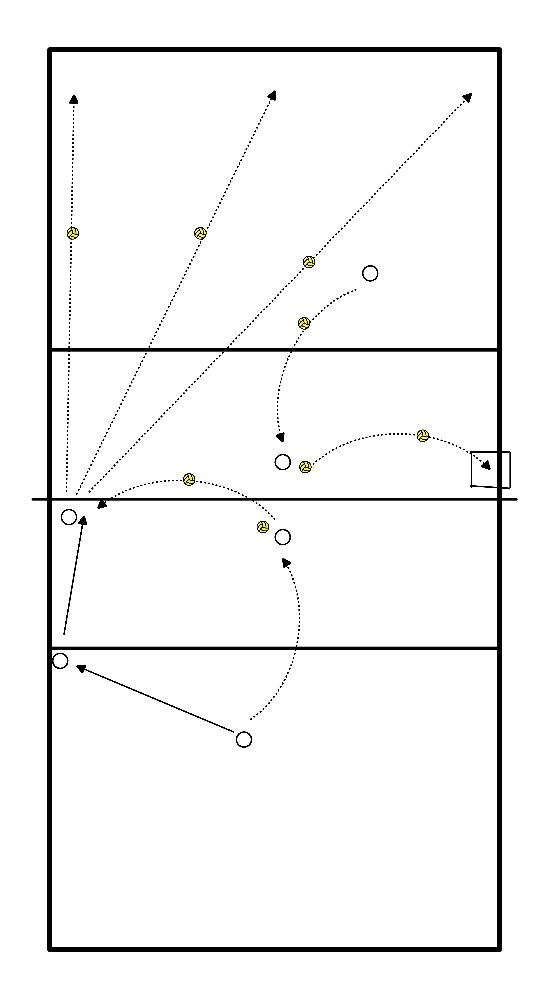
Exercise on stroke
- per 2 players one hoop and one tennisball
- try to play the tennis ball into the hoop with an overhand throw, pay attention to the wrist movement
- the difficulty can be determined by increasing the distance to the hoop.
- afterwards with a volleyball
- next step throw and hit yourself
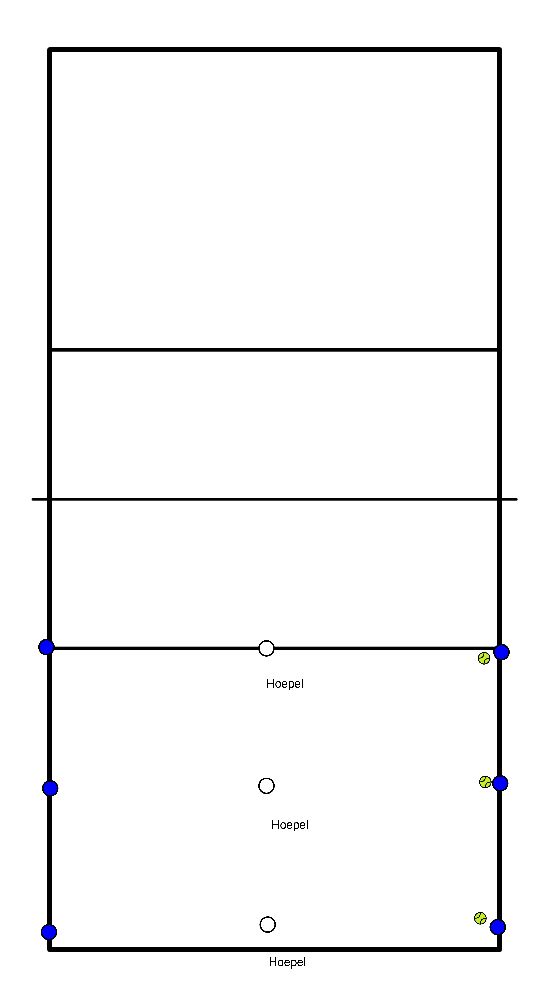
- Exercise in competition form, 2 teams of 3 players against each other.
- 3 contacts before the ball is played over the net.
- First contact is OH reception, second contact may be played with replacement technique (unlike normal first contact).
- Replacement technique goes to SV.
- SV makes high pass, which is tested over.
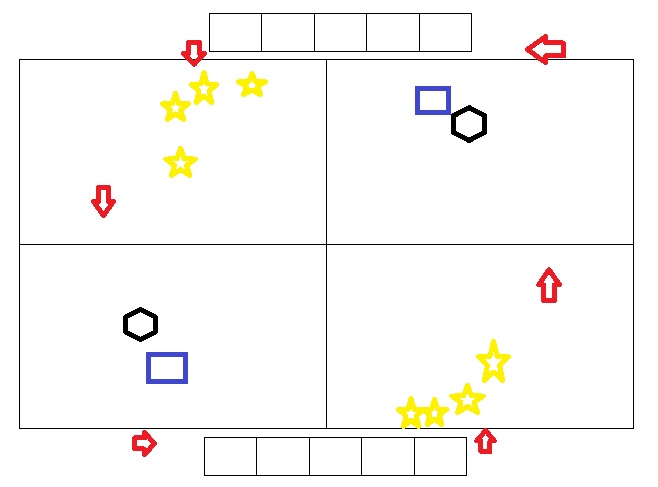
Basic exercise:
- Trainer throws ball, player catches ball and puts it in the cart.
- After this the player goes to the ladder. Here he goes through it and joins the next row.
Differentiation/Extension:
- Throwing the ball in a difficult way (left and right, front and back).
- Playing underhand and catching for themselves.
- Two players stand ready next to each other and have to call loose.
- A setupper comes on and has to catch the underhand ball.
- An attacker arrives and has to play the ball from the setupper over the net.
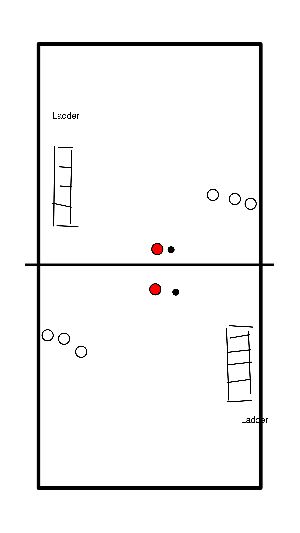
- Smurf tag is actually very similar to normal tag.
- You have Gargamel who has to tag everyone.
- Smurffin/Smurf has to free the ones who are touched.
- When you are tapped you have to stand still on the spot and wait until Smurf/ Smurf frees you.
- When Smurf/ Smurf is finished the game is over.
- You let the children stand or sit in a row with their eyes closed so you can tap the Gamel and Smurf/Smurf.
You go in the running pass to the net and back to the back line.
- To the net you swing your left arm forward and back to the baseline your left arm back.
- Now you do the same as step 1 but with your right arm.
- Now you go heel-toe, this means that your heels have to touch your buttocks, you do this with a straight back (chest out) and your hands behind against your buttocks. You do this with a straight back (chest out) and your hands against the back of your buttocks.
- Now you are going to lift your knee, this is when you lift your knees to 90 degrees, the height of your hips. You do this with a straight back (chest out), towards the net and back to the baseline.
- You are now going to do the sideways pass, this means that you look with your body to one side and move sideways. You do this in the same way as the shuffle. If you go from the net back to the baseline you turn around again.
- Finally you do the cross pass, this means that you look with your body to one side and cross your legs, your arms move with you from left to right.
You go in the running pass to the net and back to the back line.
- To the net you swing your left arm forward and back to the baseline your left arm back.
- Now you do the same as step 1 but with your right arm.
- Now you go heel-toe, this means that your heels have to touch your buttocks, you do this with a straight back (chest out) and your hands behind against your buttocks. You do this with a straight back (chest out) and your hands against the back of your buttocks.
- Now you are going to lift your knee, this is when you lift your knees to 90 degrees, the height of your hips. You do this with a straight back (chest out), towards the net and back to the baseline.
- You are now going to do the sideways pass, this means that you look with your body to one side and move sideways. You do this in the same way as the shuffle. When you go from the net back to the baseline you turn around again.
- Finally you do the cross pass, this means that you look with your body to one side and cross your legs, your arms move with you from left to right.
- 2 teams.
- Stand next to each other on all fours (rounded back).
- One player crawls under the others with the ball in front of him, at the end he rolls the ball back and stands on his own back.
- Then the next player etc. From sideline to sideline
- 2 opposite each other on the back line of both fields, 1 ball on the middle line.
- On signal of the trainer, sprint to the net, who has the ball first.
- This exercise can also be done with a dive first and then sprinting to the ball.








